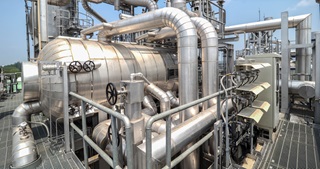A case study of a customer who achieved significant cost savings and healthier environment inside the plant.
A case study of a customer who achieved significant cost savings, eliminated downtime due to power outages.
A case study on how choosing LPG over Furnace Oil (FO) created a pollution-free environment in and outside the industry.
A case study on how choosing LPG over Furnace Oil (FO) for efficiency and optimised industrial operations.
A case study on how choosing LPG over Furnace Oil (FO) created a pollution-free environment in and outside the industry.
A case study on how choosing LPG over High Speed Diesel for Core Drying Oven
A case study on how choosing LPG over HSD improved safety and operational efficiency.
A case study on how choosing LPG over Light Diesel Oil (LDO) to LPG for saving costs and reduce environmental impact.
A case study of how transitioning to SUPERGAS LPG from natural gas ensured unparalleled safety and dependable supply.
A case study on how choosing LPG over Natural Gas ensured efficiency of the coating process and reduced operational costs.
A case study of a customer finding the perfect propane- butane blend for their customised and bulk Aerosol-grade LPG needs.
A case study of a customer who opted LPG to improve product quality
A case study of a customer leveraging LPG for Roto moulding and choosing SUPERGAS for its reliable supply
A case study of a customer leveraging LPG for powder coating and choosing SUPERGAS for its reliable supply
A case study of a customer leveraging LPG for Roto moulding and choosing SUPERGAS for its reliable supply
